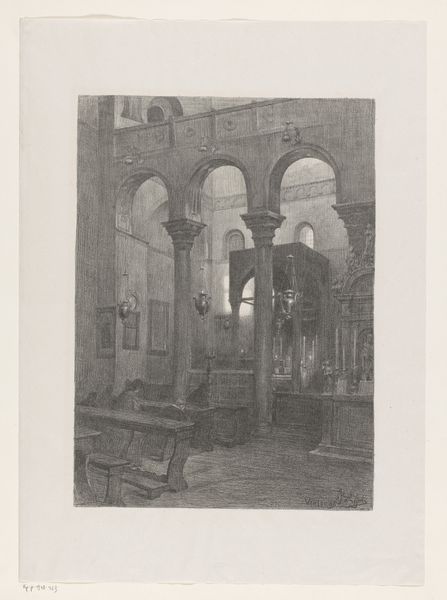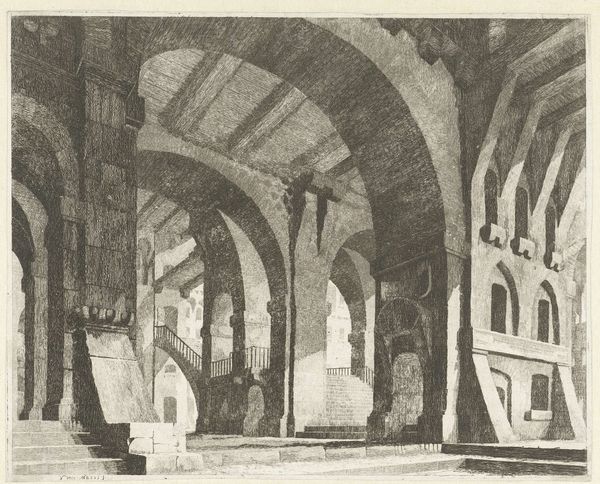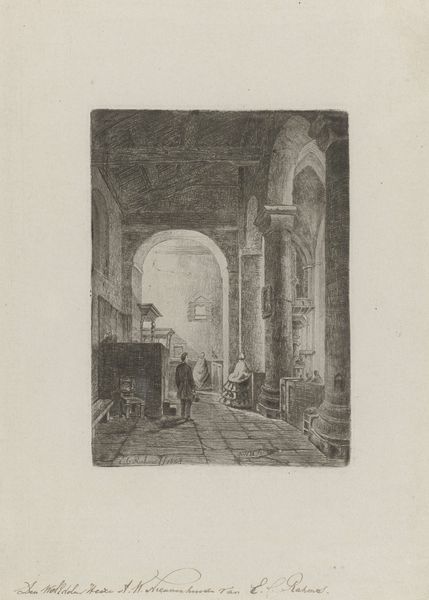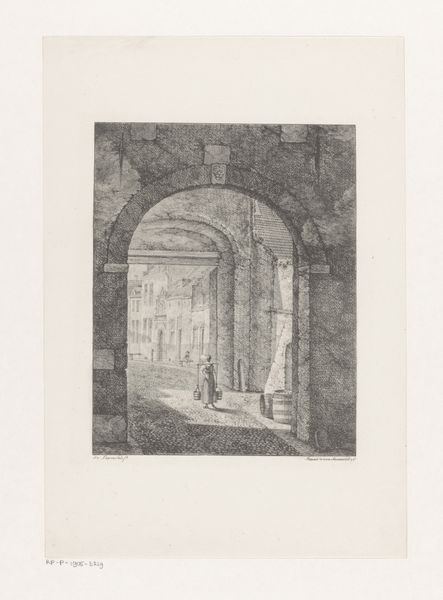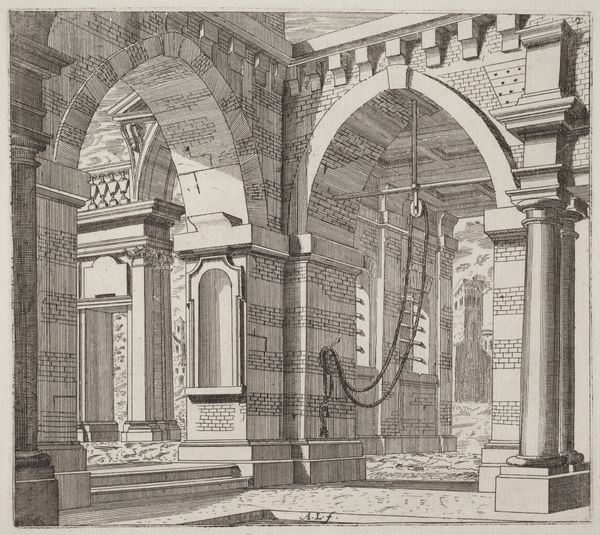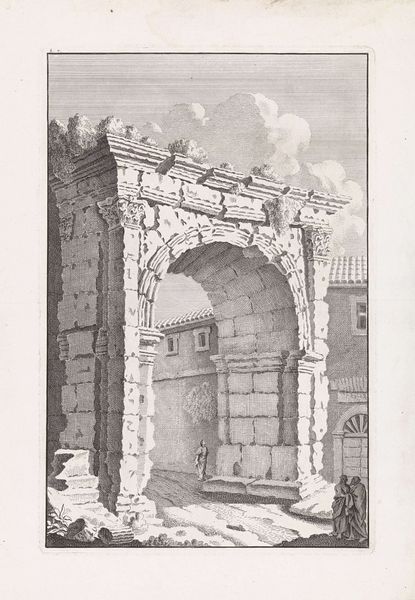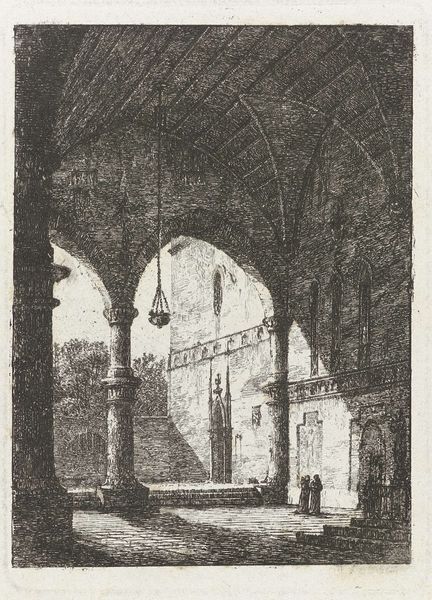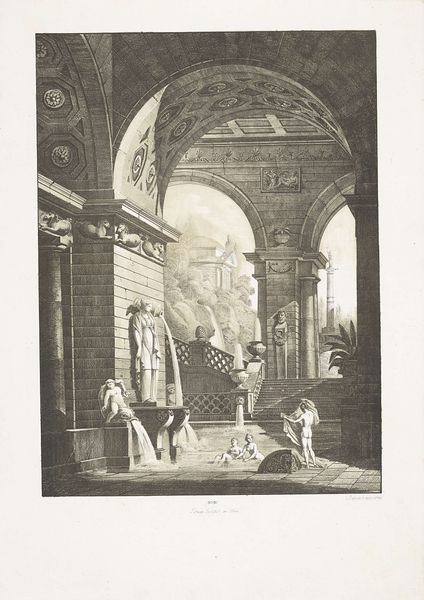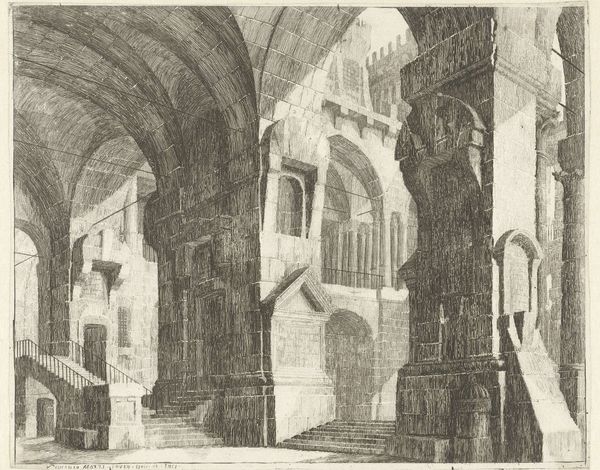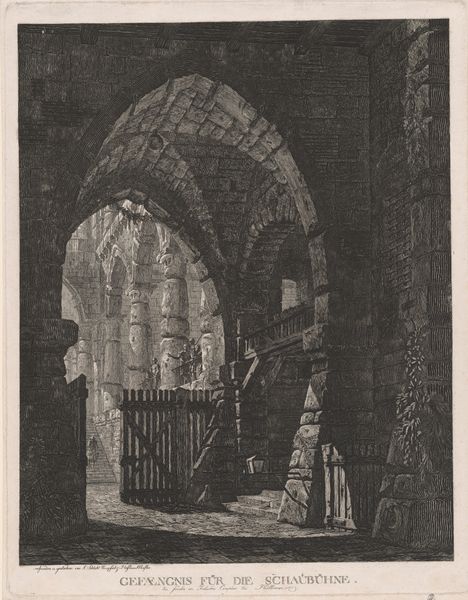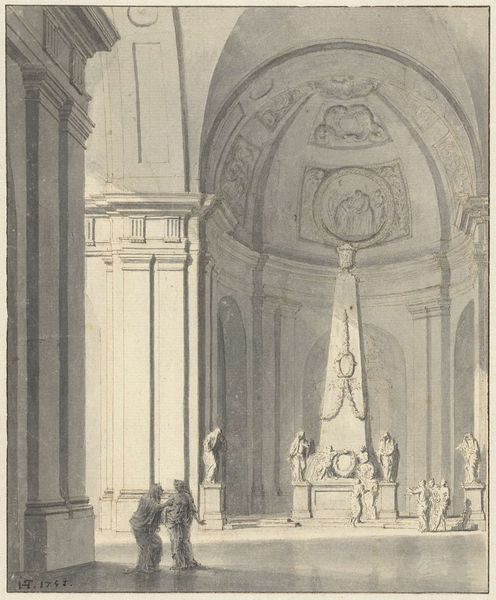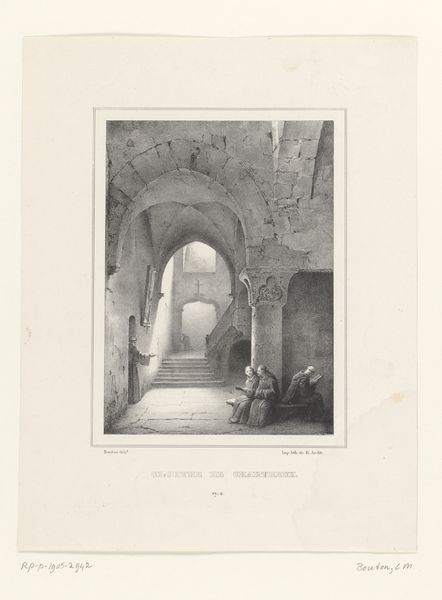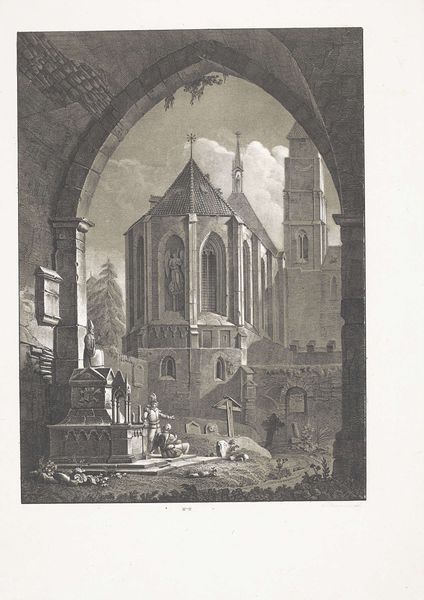
drawing, print, etching, ink, engraving, architecture
#
drawing
#
neoclassicism
# print
#
etching
#
ink
#
genre-painting
#
engraving
#
architecture
Dimensions: height 566 mm, width 405 mm
Copyright: Rijks Museum: Open Domain
Curator: This is Antonio de Pian’s "Entrance to a Burial Vault," created sometime between 1794 and 1851. De Pian worked with various mediums to create this image, including drawing, etching and engraving in ink. Editor: It has a solemn mood. The high contrast amplifies the depth and emphasizes the monumentality of the architecture. The crosshatching technique certainly adds to the gravitas. Curator: I agree. To really delve into this print, we need to consider the funerary architecture of the time, as neoclassicism had permeated European culture in many forms. This entrance represents far more than simply a place of burial; it encapsulates prevailing attitudes toward death and the afterlife. Editor: Indeed. The symmetry, the use of columns, and that balanced composition all recall classical ideals. Looking closer, the perspective creates a powerful vanishing point drawing our eye toward the back, a tiny well lit tower or perhaps even a skylight? This detail intensifies the image. Curator: Absolutely. And the figures populating the space; who are they? The architecture could signify the presence of ancestral authority, almost as if to affirm and legitimize established social orders in the face of an uncertain future and rising challenges to dynastic rule at that moment in Europe. The artist challenges us to interpret what these men guarding the vault stand for and how the mourners present may relate. Editor: I hadn’t considered that at all. Visually, though, it’s a masterful example of how varying densities of lines can suggest both form and the fall of light, especially how the beam slants down upon the mausoleum entrance. Curator: Through that doorway—a point of transition between worlds. One must wonder about the significance of what awaits those men that dare enter the vault, which at the time was not without consequences. It also encourages dialogue between then and now. Editor: Reflecting on de Pian’s masterful treatment of tone and structure reminds me how important technique is for visual storytelling. Curator: And seeing the print contextualized offers a poignant perspective on the cultural anxieties that might very well underpin these Neoclassical designs. It gives the scene a far more compelling weight.
Comments
No comments
Be the first to comment and join the conversation on the ultimate creative platform.
